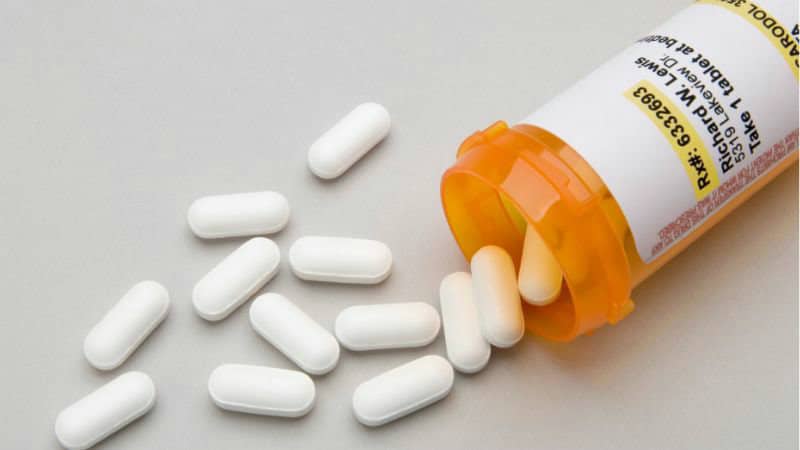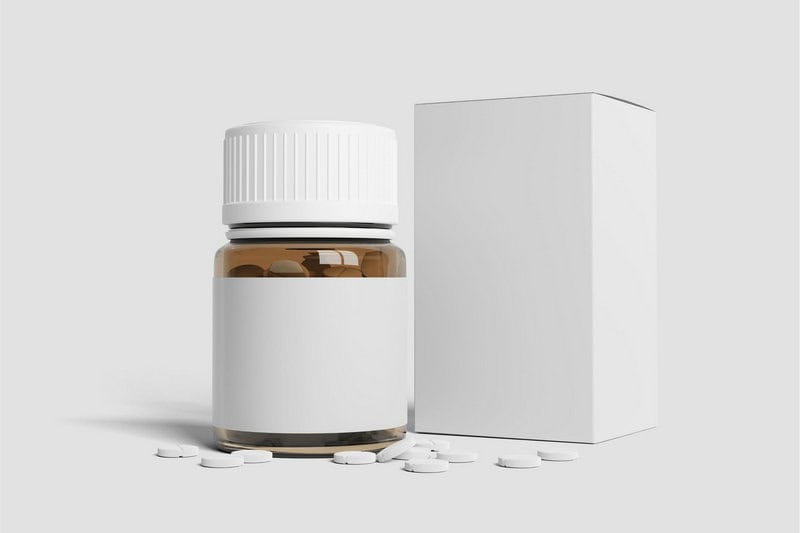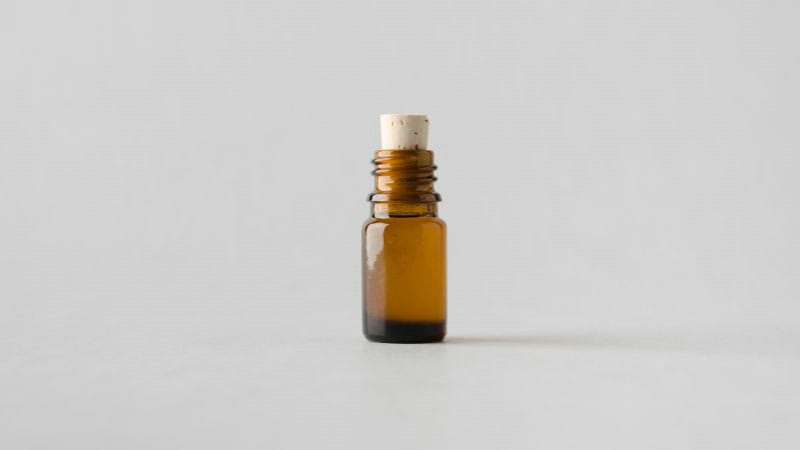
Primary Pharmaceutical Packaging Types
Blister Packs
Blister packs consist of thermoformed plastic cavities sealed with a lidding material. They offer excellent barrier properties against moisture and light which is commonly used for solid oral dosage forms like tablets and capsules.
Ampoules
Ampoules are small, sealed glass containers designed for single-use parenteral products. They provide a hermetic seal that protects sensitive liquid medications from air and contaminants.
Vials
Vials serve as multi-dose containers for liquid or powder medications. They come in glass or plastic versions with rubber stoppers and aluminum seals. You reconstitute powder formulations by adding a diluent through the stopper.
Bottles
Bottles contain solid oral medications, liquids, or topical preparations. They feature child-resistant caps and tamper-evident seals. You encounter two main types: amber glass bottles for light-sensitive drugs and high-density polyethylene bottles for chemical resistance.
Pre-filled Syringes
Pre-filled syringes combine a glass or plastic barrel with a needle and plunger system. They deliver accurate dosing for injectable medications. You administer them directly without transfer steps, reducing contamination risks.
Exploring Secondary and Tertiary Pharmaceutical Packaging
Secondary Packaging
Secondary packaging provides an extra layer of protection and branding for your primary containers. Cartons and boxes hold primary packages like vials or blister packs, offering tamper-evident features and marketing space. This packaging simplifies identification and handling during distribution while safeguarding primary containers from minor impacts.
Tertiary Packaging
Tertiary packaging ensures bulk transport safety for pharmaceutical products. Pallets, crates, and shrink wraps consolidate multiple secondary packages for large-scale shipping. These materials protect entire shipments from mechanical damage and environmental factors during storage and transportation.
Key Materials Used in Pharmaceutical Packaging
Polymers
Polymers provide versatility and strength for various packaging formats.
- Use polyvinyl chloride (PVC) and polypropylene (PP) for blister packs and bottles.
- Select polyethylene terephthalate (PET) for its clarity and impact resistance in bottles.
- Consider low-density polyethylene (LDPE) and high-density polyethylene (HDPE) for squeeze bottles and caps.
Glass
Glass offers superior protection and inertness for sensitive formulations.
- Choose Type I borosilicate glass for its high chemical resistance in vials and ampoules.
- Utilize amber-colored glass to protect light-sensitive medications from degradation.
Aluminum Foil
Aluminum foil delivers the highest barrier against environmental factors.
- Use foil in multi-layer laminations for sachets and pouches containing moisture-sensitive powders.
- Rely on its total light blockage for photosensitive drug products.
Summary chart of pharmaceutical packaging
| Material | Key Properties | Common Applications |
|---|---|---|
| Polymers | Versatility, moisture resistance, moldability | Bottles, blister packs, vials, sachets |
| Glass | Inertness, clarity, light protection (amber) | Vials, ampoules, bottles |
| Aluminum Foil | Total light/moisture/oxygen barrier | Blister lidding, pouch laminations |
| Paper | Printability, sustainability, stiffness | Cartons, laminate layers |
5 Sustainable Pharmaceutical Packaging Trends
The trending of the pharmaceutical is shifting toward more sustainable solutions without compromising safety. More recyclable materials and reduced packaging waste will appear and the biodegradable options and smarter designs are becoming priorities.
Use of Biodegradable Materials: Biodegradable packaging materials, such as corn starch and cellulose, which can be decomposed by microorganisms in about one – year, are being applied to pharmaceutical packaging.
Addition of QR Codes: According to the requirements of EU Regulation (EU) 2021/2226, manufacturers and pharmaceutical companies need to place QR codes on their packaging.
Combination of Product Functions and Packaging Design: A trend in the pharmaceutical industry is to add product information and instructions on primary and secondary packaging materials, thereby reducing the need for additional instruction materials.
Rise of Prefilled Medications: This form of packaging can reduce the environmental impact of manufacturers and the risk of patients’ dosing errors.
Application of Recyclable Mono – materials: Using single – material packaging instead of complex multi – layered materials can simplify the recycling process.
Visit Somewang’s website, to know more about the sustainable solution.
Somewang’s Pharmaceutical Packaging Solutions
PET Medicine Capsule Pill Bottle

Somewang empty PET medicine bottles are tailor-made for pharmaceutical and healthcare needs, combining durability, safety, and customization to meet your brand requirements.
Crafted from food-grade PET material, these bottles offer excellent barrier properties to protect contents from moisture, light, and external contamination.
For the 80ml model, precise dimensions optimize storage and transportation, while larger capacities cater to varying product volumes.
Health Care Pharmaceutical Packaging
This plastic medicine pill bottles are designed to safely store and display pills, tablets, and small-dose healthcare products, with a focus on compliance, usability, and brand differentiation.
Made from high-grade PET plastic, these bottles are shatterproof, lightweight, and resistant to chemical interactions—making them suitable for long-term storage of pills (e.g., vitamins, prescription medications, OTC medicine).
The 100ml to 200ml capacity range covers diverse needs: 100ml for travel-sized pill packs, 120ml/150ml for daily-use medications, and 200ml for bulk pill storage.
All bottles feature a user-friendly design and compatible with standard pill bottle caps.
Frequently Asked Questions
What is the purpose of pharmaceutical packaging?
Pharmaceutical packaging protects medications from light, moisture, and contamination to maintain their safety and effectiveness. It ensures drug stability throughout the shelf life and supports patient safety by preventing exposure to harmful elements.
What are the main types of primary pharmaceutical packaging?
Primary packaging includes blister packs, ampoules, vials, bottles, and pre-filled syringes.
Why are blister packs commonly used in drug packaging?
Blister packs are popular for tablets and capsules due to their excellent barrier properties. Made from thermoformed plastic and aluminum foil, they protect against moisture, light, and contamination while offering unit-dose convenience.
What materials are most used in pharmaceutical packaging?
The primary materials are polymers (like PVC and PET), glass, aluminum foil, and paper.
How does secondary packaging support pharmaceutical products?
Secondary packaging adds an extra layer of protection for primary containers. It provides tamper evidence, marketing space, and simplifies identification and handling during distribution.
What role does tertiary packaging play?
Tertiary packaging protects entire shipments from mechanical damage and environmental factors during storage and transportation.
Why is material selection important in drug packaging?
Choosing the right material is critical to maintaining potency and safety.
Incorrect selection can lead to reduced shelf life or compromised medication effectiveness.

